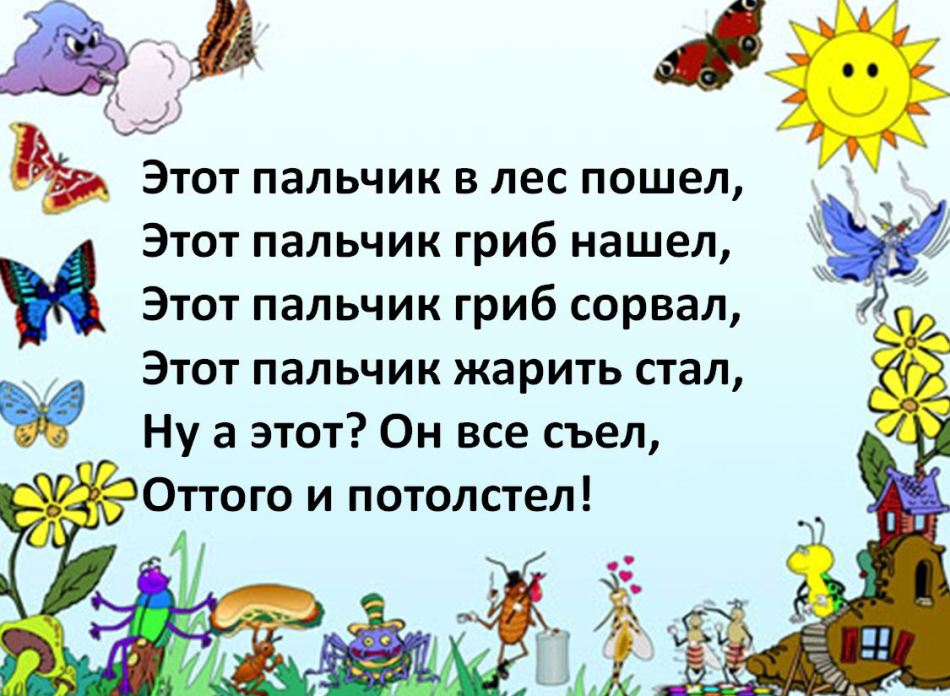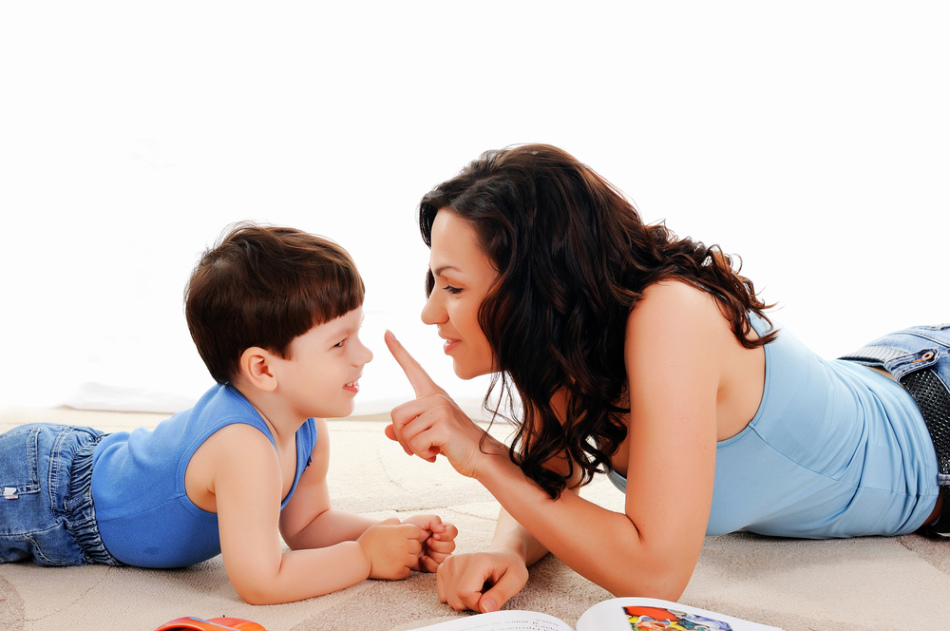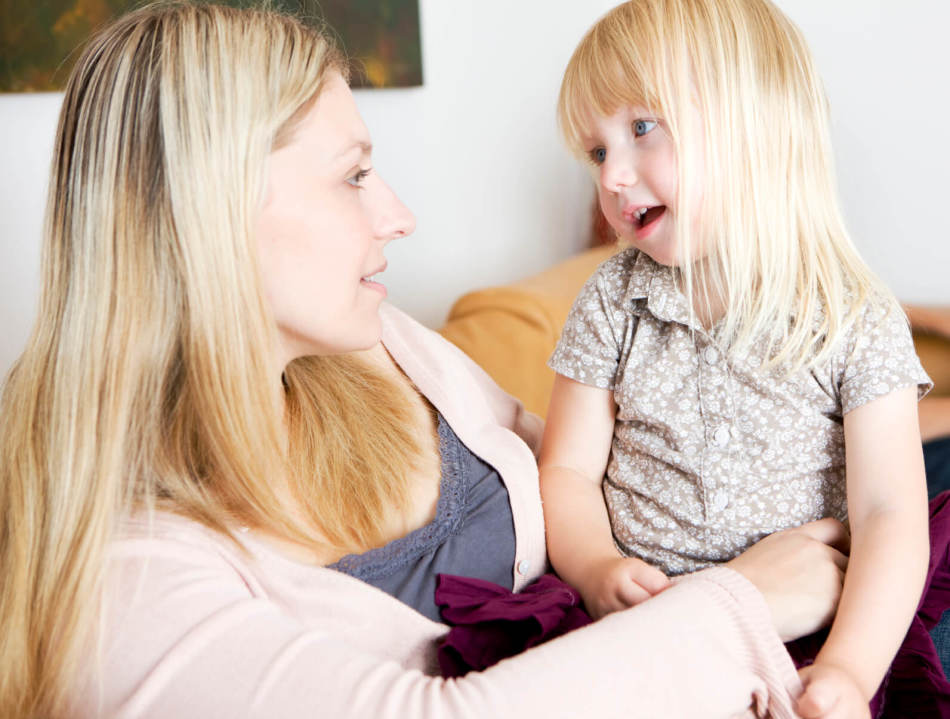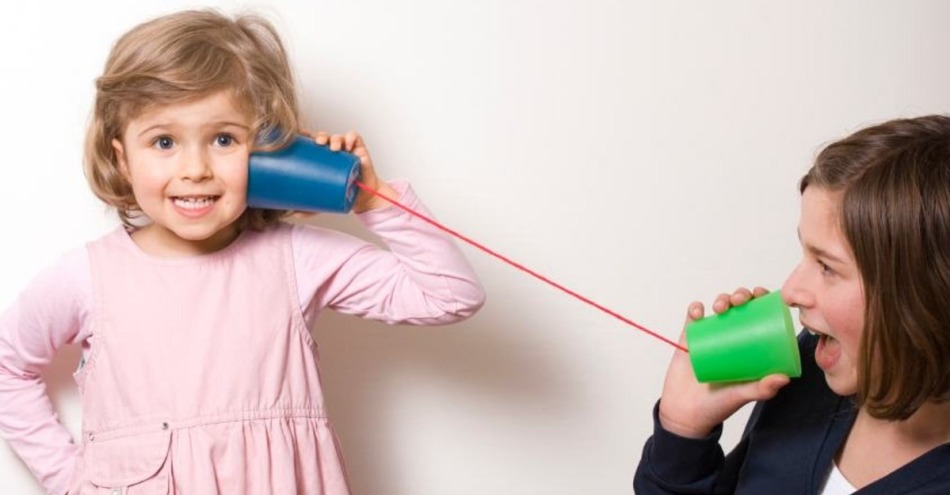The article will tell you how to develop the speech skills of a child at different age stages, give examples and specific practical methods of speech development, will give recommendations on the formation of proper pronunciation in a child
Content
- How to develop a child’s speech: Memo
- How to develop a child’s speech in the first year of life?
- Songs, poems and nursery rhymes for the development of speech in children 2 - 3 years old
- How to develop speech with a preschooler: tips, recommendations
- We play and learn to say: role-playing games for children
- Why does the child say poorly: reasons
- Work on the correct pronunciation: exercises, articulatory gymnastics in pictures
- How to develop speech in school children: tips, recommendations
- Video: Development of a child's speech up to a year
- Video: Speech development in children 1-3 years old
- Video: Speech development in a child 3-4 years old
- Video: The development of a child's speech 5-7 years old
The task of parents is to create an environment favorable for the development of the child, to help to reveal the potential laid down in it, to direct and, if necessary, help your child at each stages of its formation.
The development of speech is an important step in the development of crumbs. Parents are always looking forward to the first words. Firstly, because this greatly facilitates the process of interpreting the desires and needs of the chad, and secondly, this indicates that the child develops normally and gradually joins the adult world.

It should be remembered that there is no examples of a healthy child in society, in medical practice, there is no. Sooner or later, this moment will come, regardless of whether they are additionally engaged with the child or not.
However, the kids whose development was given due attention, begin to speak faster, build sentences more correctly, do not distort words, have a richer margin of words, which means that in the future they are unlikely to encounter the need to catch up in the preparation for school and will be able to distinguish an additional Time for the development of other intellectual abilities.
How to develop a child’s speech: Memo
In order to facilitate the task of the child in mastering new words and the correct application of them in practice, you need to adhere to the following principles:
1. Start from the very beginning
It means from the very birth of the child, but you can still be pregnant. Do not be afraid that you have already missed something, we are not talking about special classes, the main thing is simple communication, eye contact. It is unlikely that there is a mother who has not talked with her baby since his birth, and many begin even long before that

2. Develop the habit of commenting on everything, What are you doing and see
It will not be difficult for people to find a permanent subject of conversation with a child by nature or on duty, more silent will have to develop these skills a little in themselves
3. Play with your intonation
At first, the child is able to understand only the difference in your intonation, so more often change it to attract the attention of the child to his speech
4. Use a high voice
It is proved that children react better to a high voice. Many women intuitively switch to a more squeaky voice when communicating with their child
5. Speak slowly, repeating several times
Obviously, with a quick, slurred speech, the child simply does not catch the meaning of words and in the future it can be incorrectly pronounced

6. Simplify words and sentencesbut not get carried away by the modification of words and "Susyakan"
At first, it will be difficult for a child to master complex terms and long words, so the methodology of reduction and simplification of speech can be effective. For example, instead of the word “dog”, one can say “woof-beam”, or explaining to the child why you can’t touch the socket, you should not talk about the essence of electricity and voltage on the network, you can simply say “you cannot, it hurts” (or “BO-BO "). But you don’t have to intentionally inspect the words, especially after a year, like "Cuto for a class Masyanychka is a senser here?"
7. enrich your speech with the child gradually, adding new words, clarifications and additions
For example, at first you can say “Masha holds the bear”, then add “Masha holds a large fluffy bear. Bear loves honey "
8. Exclude background
Many background sounds (for example, TV) can confuse the child, do not allow you to fully focus on you and what you say to the baby
9. Pay attention to fine motor skills
It is proved that the development of nerve endings on the fingers and palms of the hands is directly related to the development of speech. Therefore, it is so important to stimulate the versatile tactile sensations of the child (hands massage, finger games, sorting out small objects, touching different surfaces to the touch)
How to develop a child’s speech in the first year of life?

In the usual adult manner of communication, i.e. With the help of words, the child will begin to speak only in the second year of life. Speech, however, consists of two components: reproduction and understanding (perception).
Important: children begin to understand the meanings of words much earlier than they learn to pronounce them.
In other words, the child throughout the first year forms the so -called passive baggage of words. And in the second year, as a rule, it translates it into an active status, i.e. It begins to use these words in his speech.
It is very important to help your baby learn as many words as possible, while establishing certain connections and associations of words with real objects or actions.

Given that the child in the first year develops very rapidly, we will consider the main stages of the child’s speech development in the first twelve months.
- 0-3 months
The child communicates with the help of crying or screaming, well captures the intonation of your voice
- 3-6 months
The period of "humming". It is at this age that the baby, in a good mood, can please the sounds of “AGU”, is able to pronounce many vowels and some consonants. An important feature is the ability to enter into a dialogue with a child, speak with pauses, providing the child's opportunity to answer. You can encourage the baby, repeating the sounds pronounced by him
Important: up to about 4-5 months, children do not understand the meaning of words, but interpret your speech on intonation.
- 6-9 months
The phase of the babble. After six months, many parents are able to catch in chaotic sculpting the words “b-ba”, “pas”, “ma-ma”. At the very beginning, this is only a set of syllables alternating in different sequences. At this stage, you can actively teach the child to words, calling the objects surrounding him

- 9-12 months
By the end of the first year, the child pronounces his first words. Some kids are able to utter up to 10 words. But everything is individual, and depends, including on the temperament of the child. If you are not talkative by nature, your child is unlikely to start chatting incessantly
Separately, it should be mentioned about the methods of early development of the child. The desire of parents to grow a capable child is smarter and more successful, quite natural. But in a fit of best motives, it is important not to achieve the reverse result. The life of a child of the first year is connected, first of all, to the emotional side. Therefore, lively sensual communication should become primary, rather than mechanical memorization of words from cards, which they recommend to the child from the first days of life.

A number of techniques really demonstrate high results: children know many words, begin to read and write earlier than to speak. But often they have problems with communication, emotions, social and personal life in the future. Therefore, everything needs to be approached reasonably and focus before the desire and interest of the child.
The main techniques of speech development in children of the first year are:
- sound imitation of a child
- commenting on what is happening
- songs, nursery rhymes, finger games
- the development of fine motor skills
Songs, poems and nursery rhymes for the development of speech in children 2 - 3 years old
These are perhaps the most effective, generations tested by generations of communication with young children.
Basic principles:
- simple rhyme
- repetition of sounds or words
- small size
- sPECTION TASE/ACTIONS
The rhymes can be told, or you can hum, using various melodies.
The main goal of nursery rhymes, finger games, poems:
- emotional contact with the child
- development of its speech skills
- finger massage
- studying parts of the body
- help in establishing the regime
For example, repeating the same rhyme in front of a night's sleep, you can develop a child’s expectation of a funny poem and an understanding that he should sleep.
Important: young children need to observe the sequence of actions and order, as this develops a sense of stability and security.
You can come up with or choose from many existing nursery rhymes for different cases:
- morning hygienic procedures

- dressing the child

- preparation for swimming

- before gymnastics

- finger massage

- before bedtime

The baby will delight the baby and the classic nursery rhymes “okay”, “cockerel-grab”, “horned goat”, “forty whitebox” and many others will be useful.
How to develop speech with a preschooler: tips, recommendations
The peak of speech development is usually observed in children on the second or third year of life. As a rule, at the age of about a year, the child begins to walk, and a linguistic breakthrough comes to change in physical development. Parents, of course, can stimulate their child to develop speech using the following techniques:
- Joint reading of fairy tales and their discussion

- Binding pictures with real objects
Showing the child this or that picture in the book, try to find its analogue in the real world and point out the child to the resemblance
- Clarification and correct repetitionthe words said by the child
If the child shows the subject and does not pronounce it correctly, you should not point out the error, you need to agree and repeat it correctly. For example, the child said: “Pashina”, you should answer: “Yes, this is a car”
- CHOICE OFFER
By offering the child something, expand his vocabulary, providing an alternative. For example: “Do you want an apple or a pear?”, “Will you drink from a mug or from a glass?”
- Verbal games
When playing with the baby, always accompany your activities with words

- Sounding what the child does and feels
Try to pronounce everything that the child does with simple simple sentences, including describe his feelings, for example, if he hurts, or hotly or cold
- Commenting on their actions
- Appeal by name, eye contact
Contact a child by name more often, do not forget to look into the baby's eyes so that he understands that the appeal is addressed to him
- Using gestures
At first, gesticulation is an indispensable thing for understanding and teaching a child to words, therefore, duplicate all words and actions with appropriate gestures. Soon the child will begin to associate them with the words
- Muscle training
To train the muscles of the speech apparatus, you can buy a child a whistle, a pipe, a province, and a little later start to engage in articulation gymnastics with the baby
- Reading by roles
If you regularly told the child the same rhyme or a nursery rhyme, he will quickly learn her words, so over time you can read the rhyme by breaking the lines in roles, as if responding to each other. A good example for this is the dialogue of the Hussi-Gusi, Ga-ha-ha-ha-ha

- Expanded determination of the properties of the subject
It is important not only to call the subject, but also to talk a little about it. For example, showing the baby a book, it should also be demonstrated that the book can be flipped through, open and close
- The answer with the addition
When the child begins to ask questions: “What is it?”, “And what?”, It will be easier for him to remember the name and meaning of the word, if you give a short description to the subject from the words that he already knows. For example: “This is a truck, it transports large items” or “This is a kettle, hot tea is brewed in it”
- Expression of misunderstanding a child who knows, but is lazy to pronounce words out loud
You can deliberately do not immediately fulfill the whim of a child, if he knows how, but does not voice the request, but only indicates with his hand. As an option, you can offer a child a deliberately incorrect object, as if you did not understand him, and only from the third time give him what he wants
Important: children at this age almost every day learn a new word. You can keep the so -called magazine "Word of the day" and write a new word spoken by the child every day. This will monitor the development of the baby's speech.

In any business, the main thing is to practice a lot, so communicate with the child always and everywhere: at home, walking in the park, on the way to the clinic, making purchases in the store.
But you should not impose communication to the baby when he is tired, wants to sleep or eat, the development of speech should also not look like a lesson in time. It is important to learn to speak during the game, during the daily everyday rituals of the child or on a walk, when the baby himself is actively looking for communication.
We play and learn to say: role-playing games for children
Games with a child are limited only by the fantasy of the parents. At the same time, the baby often tells what he wants to do, distributes the roles and organizes the game.
Your mission is to fill the game with expanded dialogs so that the game is not only fascinating, but also useful for the development of crumbs. It can be:
- Hide and seek
The classic game "ku-ku" with babies can gradually change. You can hide behind anything, attracting the child with the words "where is mom?", "Find mom." As they grow older, the child will begin to hide with the pleasure of hiding, and you will look for him with the corresponding verbal accompaniment
- Plutular playing games
At first it can be very simple games. For example, you can play with a toy phone, a child can call mom, dad, brother, sister, say “Allo”, find out “how are you?” and vice versa. Then you can play fairy tales by roles, come up with plots yourself using household items and toys

- "Guess"
There are many variations of games. You can ask the child: "Guess what am I doing?" And show some action: comb, pour tea into cups. Or ask: "Guess who I am?" And portray a bunny or a teddy bear. You can show soft animals and ask: “Guess who is it?”, “What does he like to eat”, “Where does he live?” If the child cannot answer, you should give a detailed answer on your own, and after a while repeat the questions
- Active games
Wagges and songs can be used in an active game with a child, encouraging it to repeat the corresponding actions with the words. This in parallel with speech skills will develop both the child’s physical and musical abilities. Examples:


Why does the child say poorly: reasons
According to averaged indicators, by 18 months, the child speaks 10-15 words, by two years-30-50 words, by three years-hundreds of words, by four-thousand.
The main anxieties arising from parents are due to the fact that the child:
- he says little
- he speaks wrong
As a rule, children do not immediately master the correct speech, including reduce words, miss sounds, confuse words, and make sentences incorrectly. This is quite normal, since the baby first of all learns to speak simple, easily memorable words, often says not the name of the subject, but the sound with which it is associated. For example, not a car, but a BB, did not fall, but Bach.

In addition, a generalization of many objects and actions in one word is considered natural. For example, the word "mother" will sound from the mouth of the child, and when he wants to be on the pens, and when he wants to eat, and when he needs something from his mother. Gradually, the child will add the necessary clarification. The word "car" or "bi-bi" can relate to the bicycle, and the bus, and to everything that moves.
However, it is important not to miss the moment if problems appear in the development of the child’s speech:
- a limited supply of words
- stuttering
- lisp
- loss of letters
If a child in 2.5-3 years, the child knows less than 30-50 words, distort words, lisifies or stutter, you should visit a doctor. Having timely adjusting the speech development, the peak of which is observed up to three years of age, serious problems in the future can be avoided.

The main reasons why the child does not speak or speaks incorrectly:
- He is understood without words
The baby is just lazy to pronounce the words, because it does well without them. In this case, it is necessary to cunning that you do not understand what the child wants, and force him to say this - There are hearing problems
Perhaps a sulfur cork has formed or there are other obstacles to normal hearing - Quick pace of speech
The baby is in a hurry when pronouncing words, which leads to loss of letters or stuttering. This usually takes place by 4 years - Imitation of incorrect sounds
The child imitates the sounds and words that the people hear him. Should be followed by your speech, the correctness of the pronunciation of words and constructing phrases
Important: when assessing the development of the child’s speech, focus not on pronunciation, but on the baby’s ability to use your vocabulary in different forms of sentences.
By the age of 3 years, the child should draw up sentences from 3-4 words, while using various forms of verbs, declension, face, case. If this is not the case, you should seek advice to the pediatrician, who will direct the child if necessary to an ENT or speech therapist.
Work on the correct pronunciation: exercises, articulatory gymnastics in pictures
In order for the child to quickly master the correct pronunciation of words, and you do not have to turn to a speech therapist, there is the so -called articulatory gymnastics.
Regular exercises with a child, constantly confusing and incorrectly pronouncing sounds, will lay the basis for the right and beautiful speech in the future.
Conduct a training of the muscles of the tongue, sky, lips, larynx and cheeks are better in front of the mirror.
Examples of exercises:



You can dilute classes by including funny rhymes, movements and grimaces. For example:



How to develop speech in school children: tips, recommendations
At this age, further improvement of speech takes place, the child learns to think logically and express his thoughts sequentially, learns to describe, compose, explain, argue, give arguments and convince. To do this, the child must still enrich his vocabulary, learn to analyze, beautifully express thoughts. It should be noted that this is also a period of development of written speech.

The main methods of speech development in school age can be:
- drawing up a story through answers to the questions asked
For example, for a story about an animal, you can prepare the following questions for a child: who? what colour? What does it look like? Where does it live? What is eating? What is the purpose? - drawing up a story on a series of pictures or photos
- composition of one picture
- reading books
- expansion of the horizons of the child, visiting various events, stay in nature
- disclosure of the creative side of the child
- various communication

Currently, there are a huge number of circles, sections and special groups for the development of the child, preparation for school, studying the language and others. If it is possible, of course, you can send a child to experienced specialists. However, this does not exclude the need for parents to participate in the development of their child. Truly great success, the baby will be able to achieve if he is surrounded by the attention and warmth of the closest people. Daily positive emotional communication with his child is the key to the formation of not only the correct and beautiful speech in the child, but also a strong united family.
Video: Development of a child's speech up to a year
Video: Speech development in children 1-3 years old
Video: Speech development in a child 3-4 years old
Video: The development of a child's speech 5-7 years old








Wonderful article !!! And for the development of fine motor skills, miracle toys are developed developing boards (Bizilbord).
With their help, the baby will learn:
Open/close various locks,
correlate colors (peacock),
count (numbers of liners),
will prepare a hand for a letter (labyrinth),
will change the season.
As for 8 points - more precisely, there is no where to talk to them while the TV is turned on, to no avail.
We, too, seemed to be doing everyone - sculpted, talked, painted, sorted out the cereals, but the neurologist was put up equally zrr ... Pantocalcin, vitamins, and additional massage prescribed. After all, improvements went - even short offers appeared.
A very useful article, thank you very much to the author! But we strengthened the memory and correct speech with the help of daily wipes Montessori+also gave a baby the formula of bears multivitamins ... Memory and attention really better ... now even the teachers praise) and as for the speech, it is well “p” and “l” well We pronounce, but this is probably all the same thanks to articulation gymnastics))
Despite the fact that I paid attention to the child in full, he could not talk like that. At the age of 4, they put a zrr and added medication. 3 times a week there was a speech therapist and pricked cortexin injections. Thanks to such actions, the child talked. Now it is chatting in a seriously: it may already speak offers.
Notice a memo and an excellent selection of exercises! It will help young parents pay attention to possible development problems. Thanks to the neurologist, we took a cortexin course on time, who removed a small delay in speech development. I believe that timely support helped my son master speech.